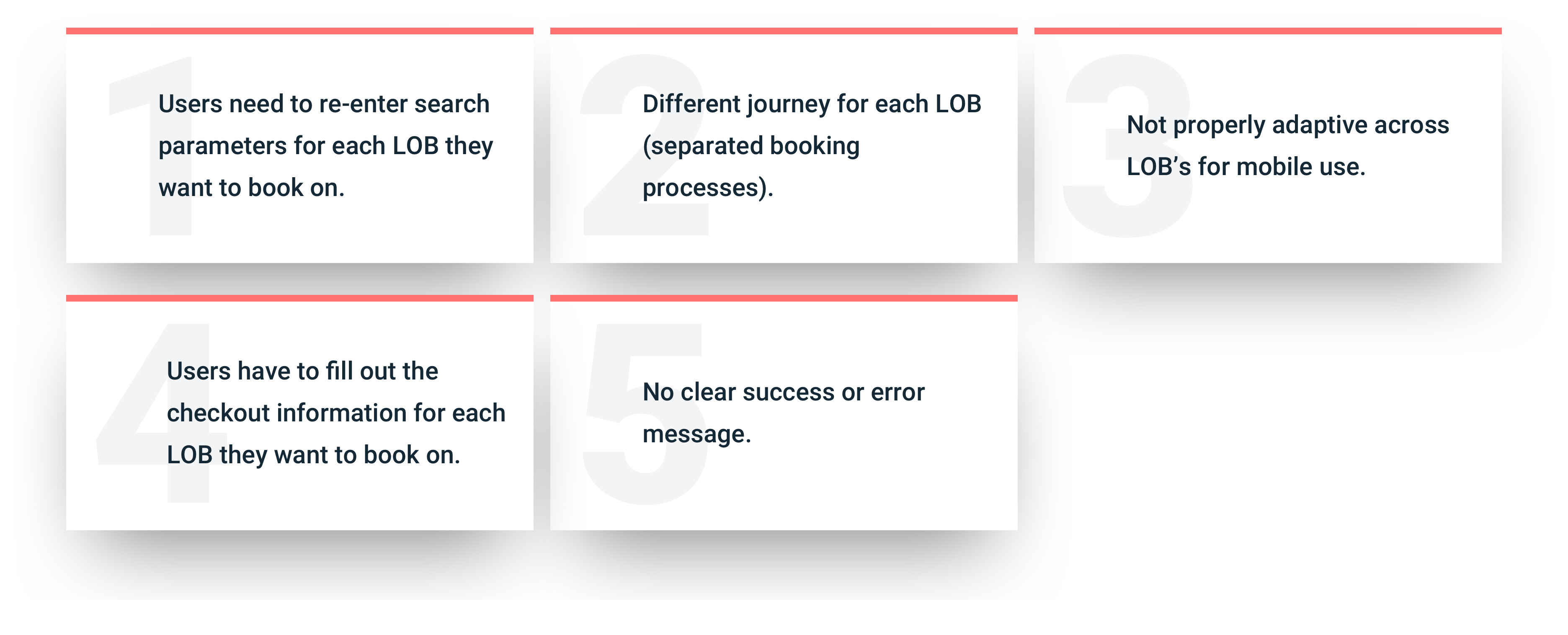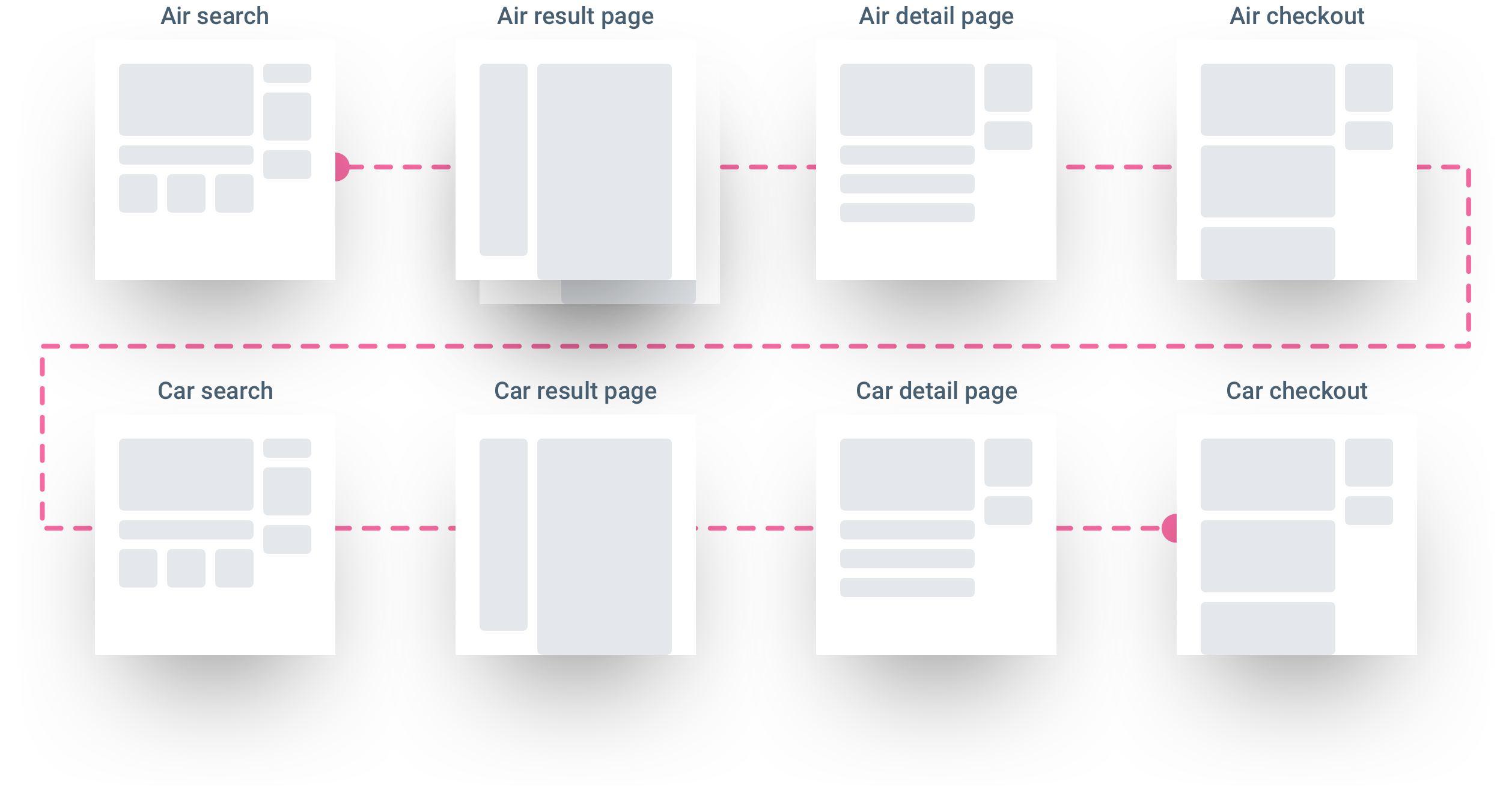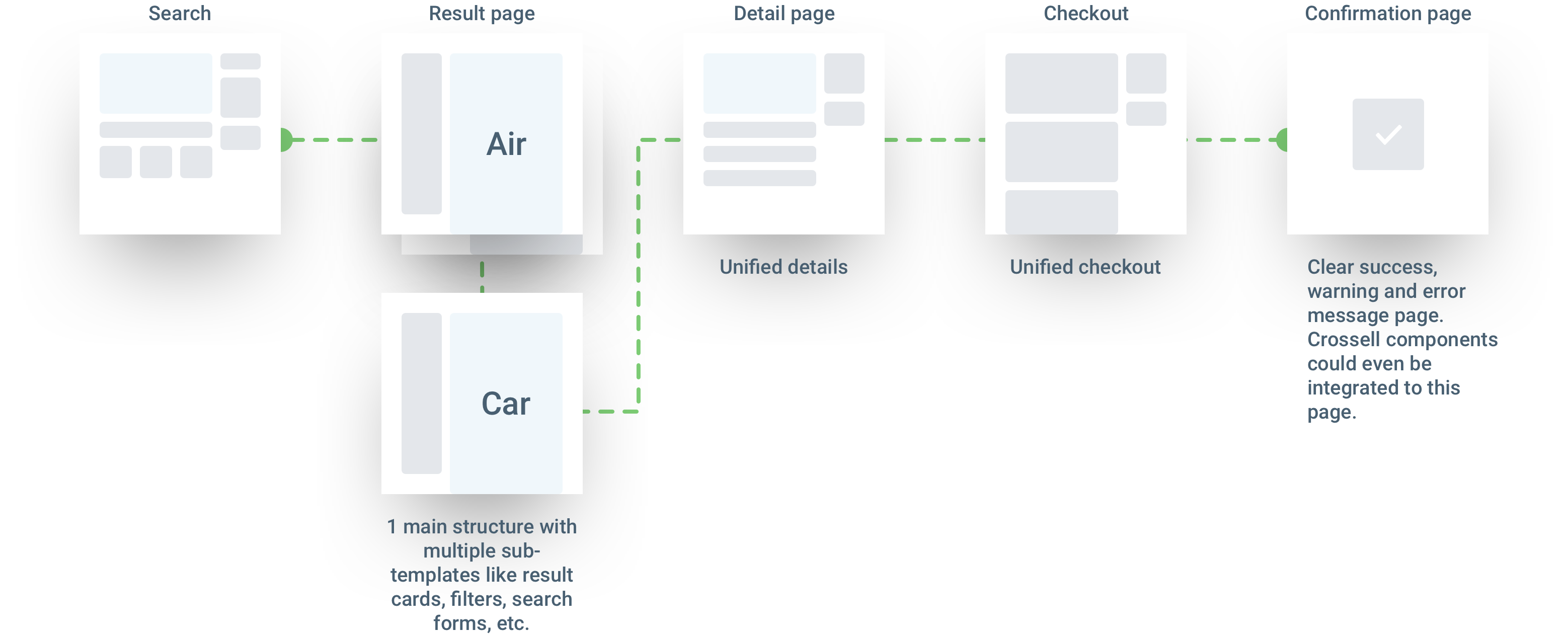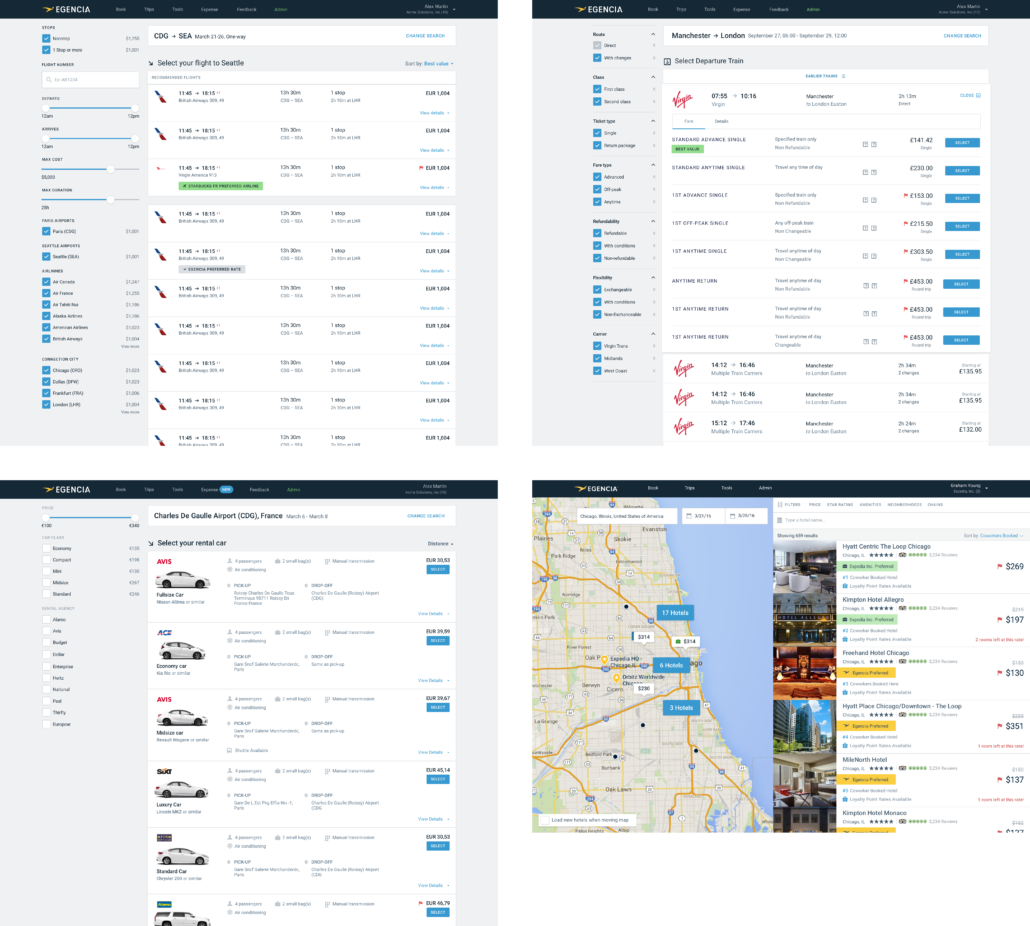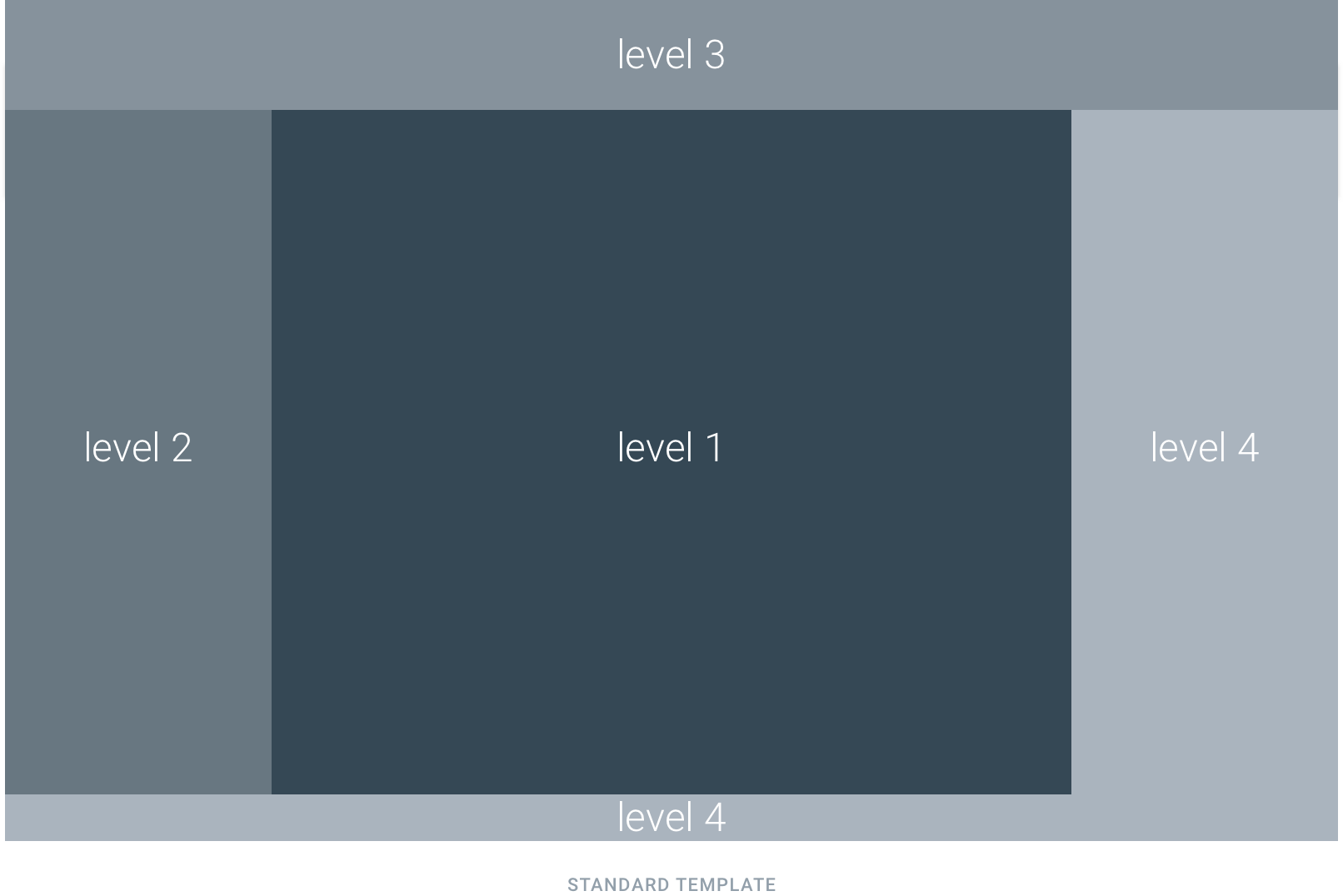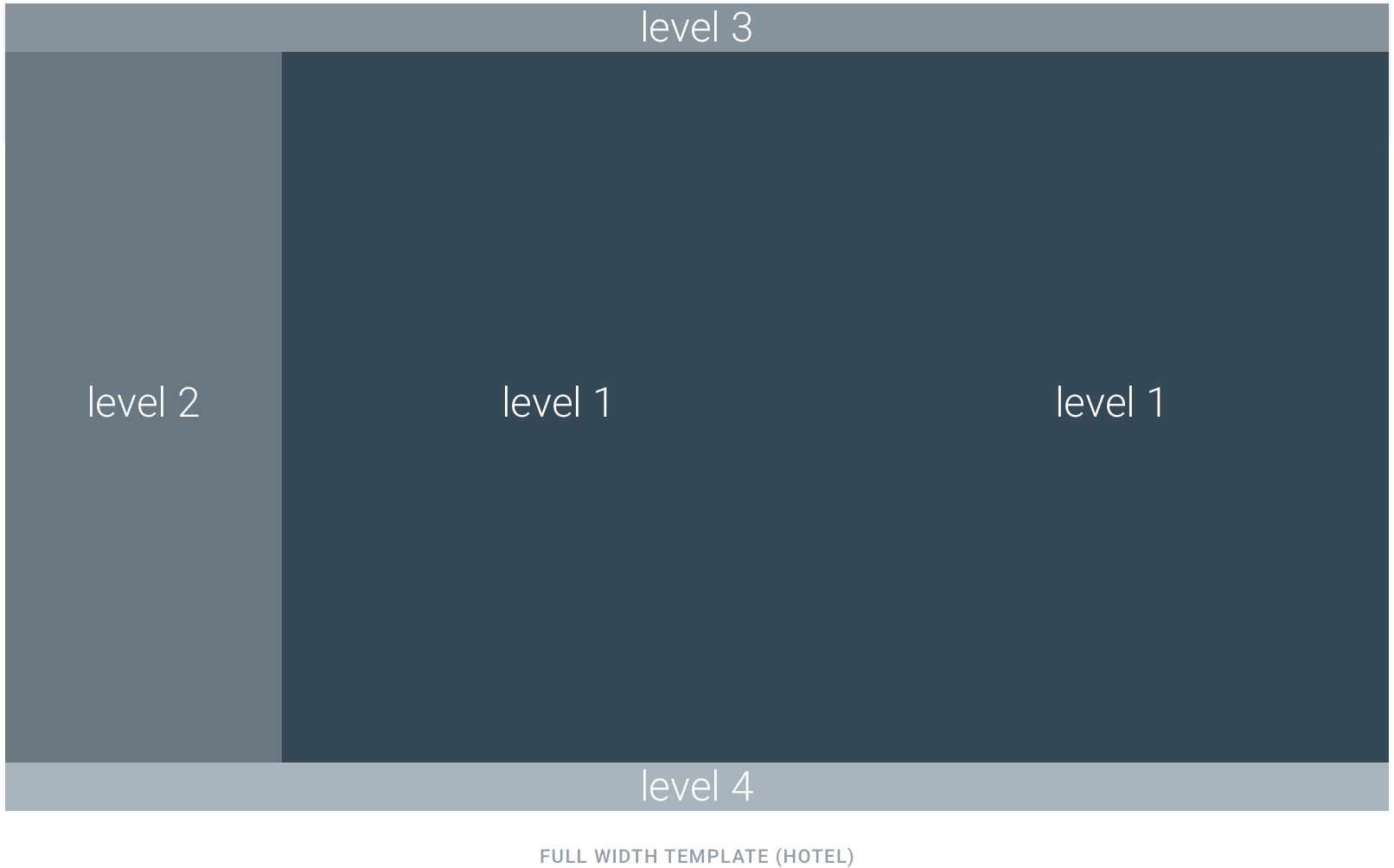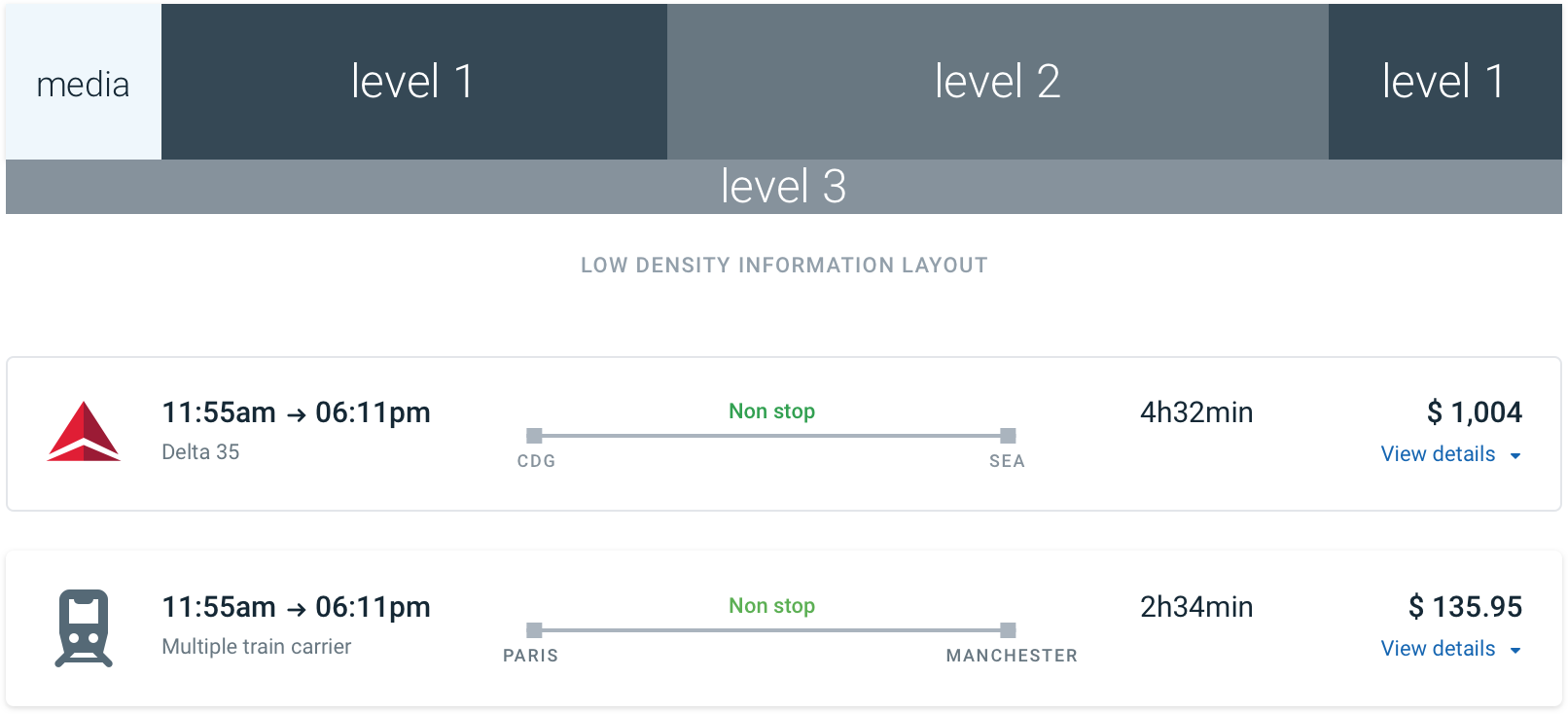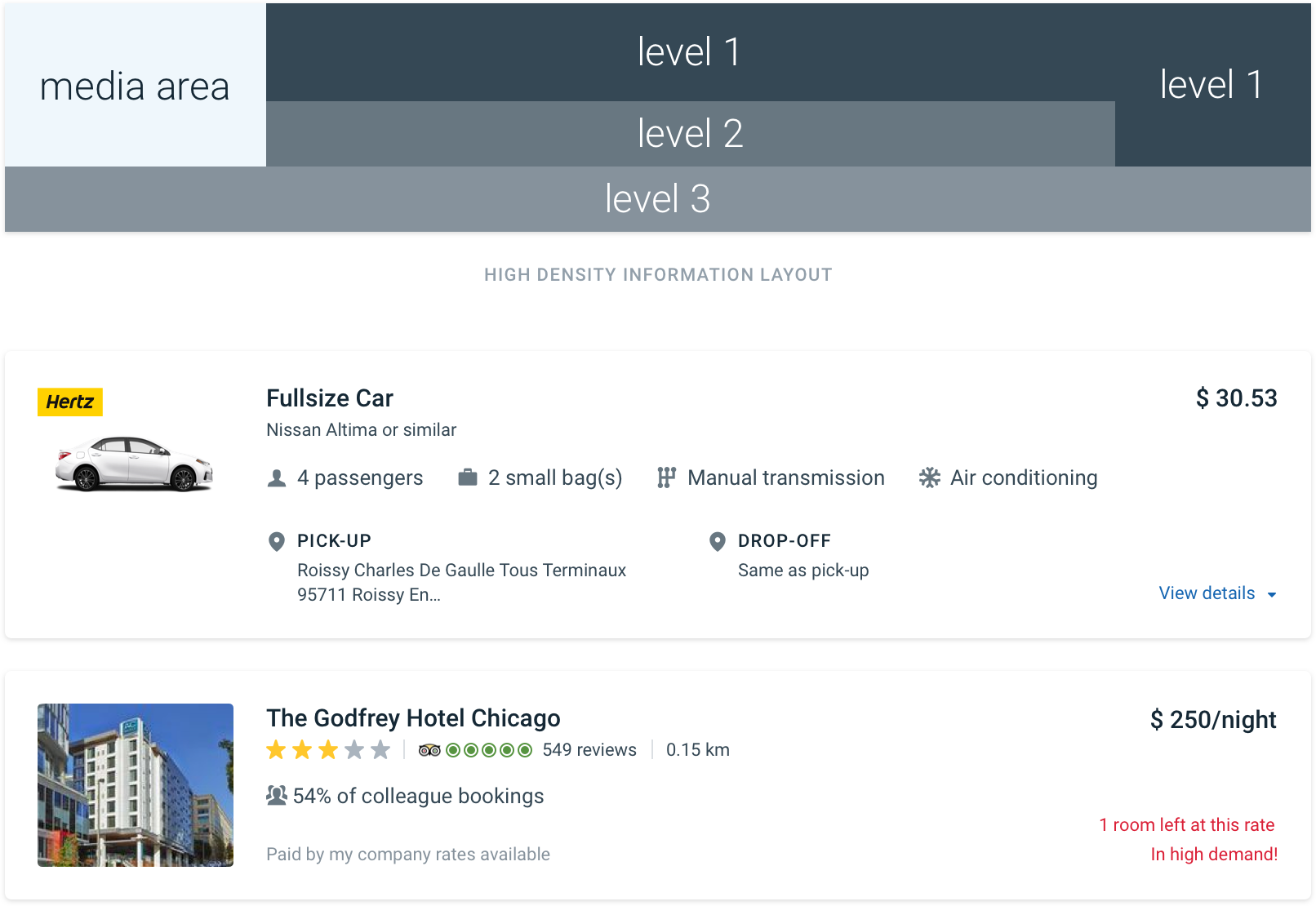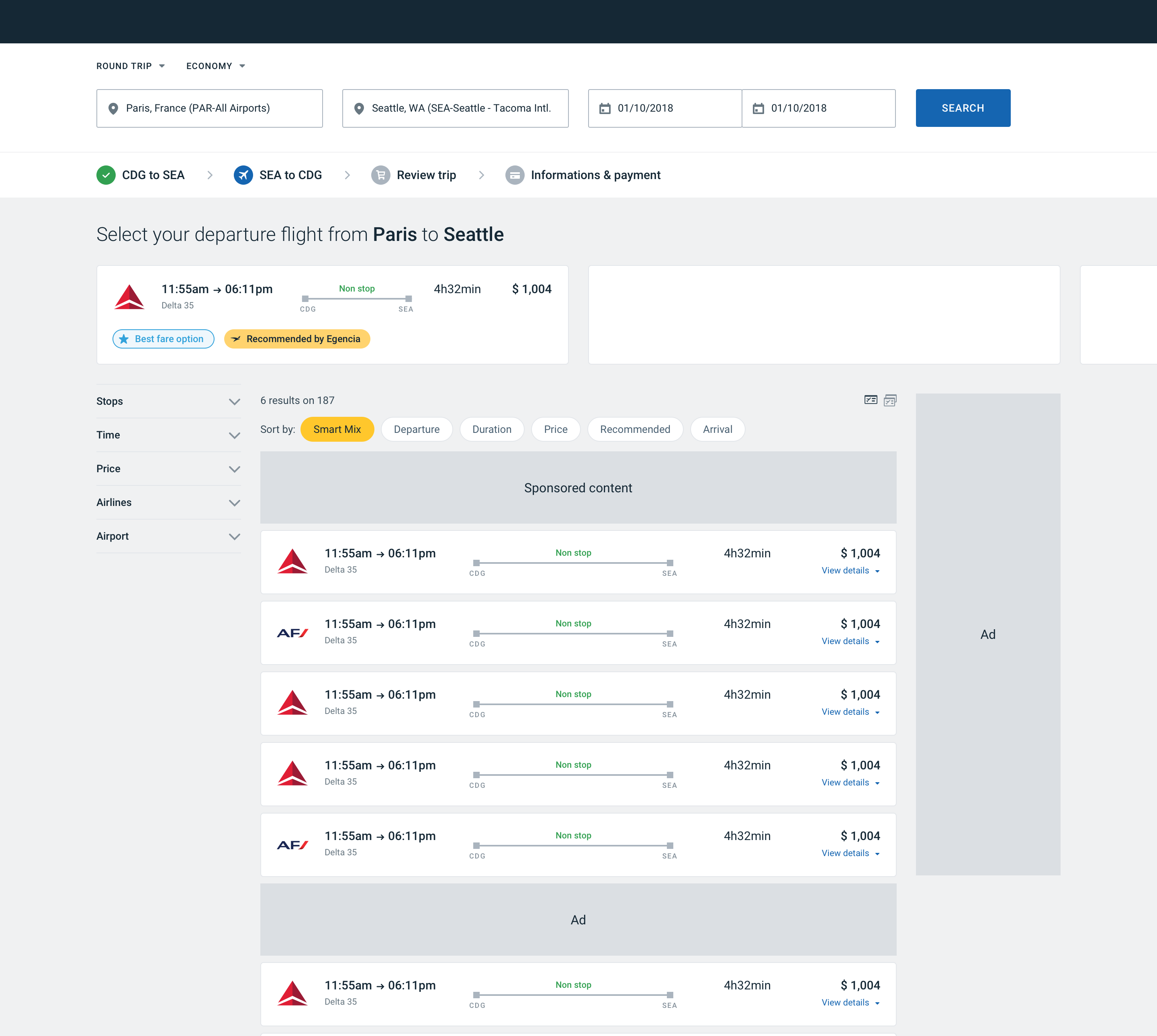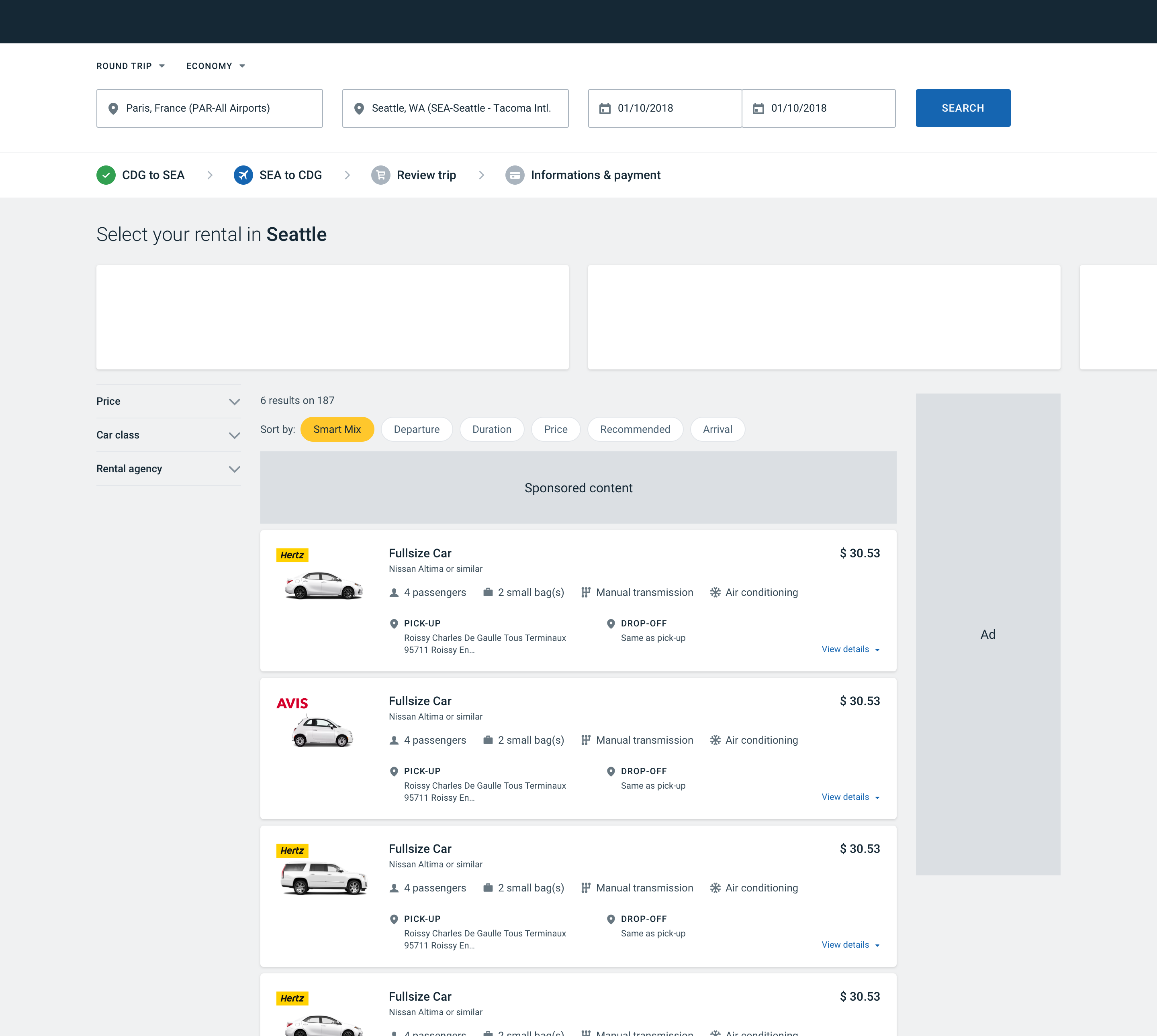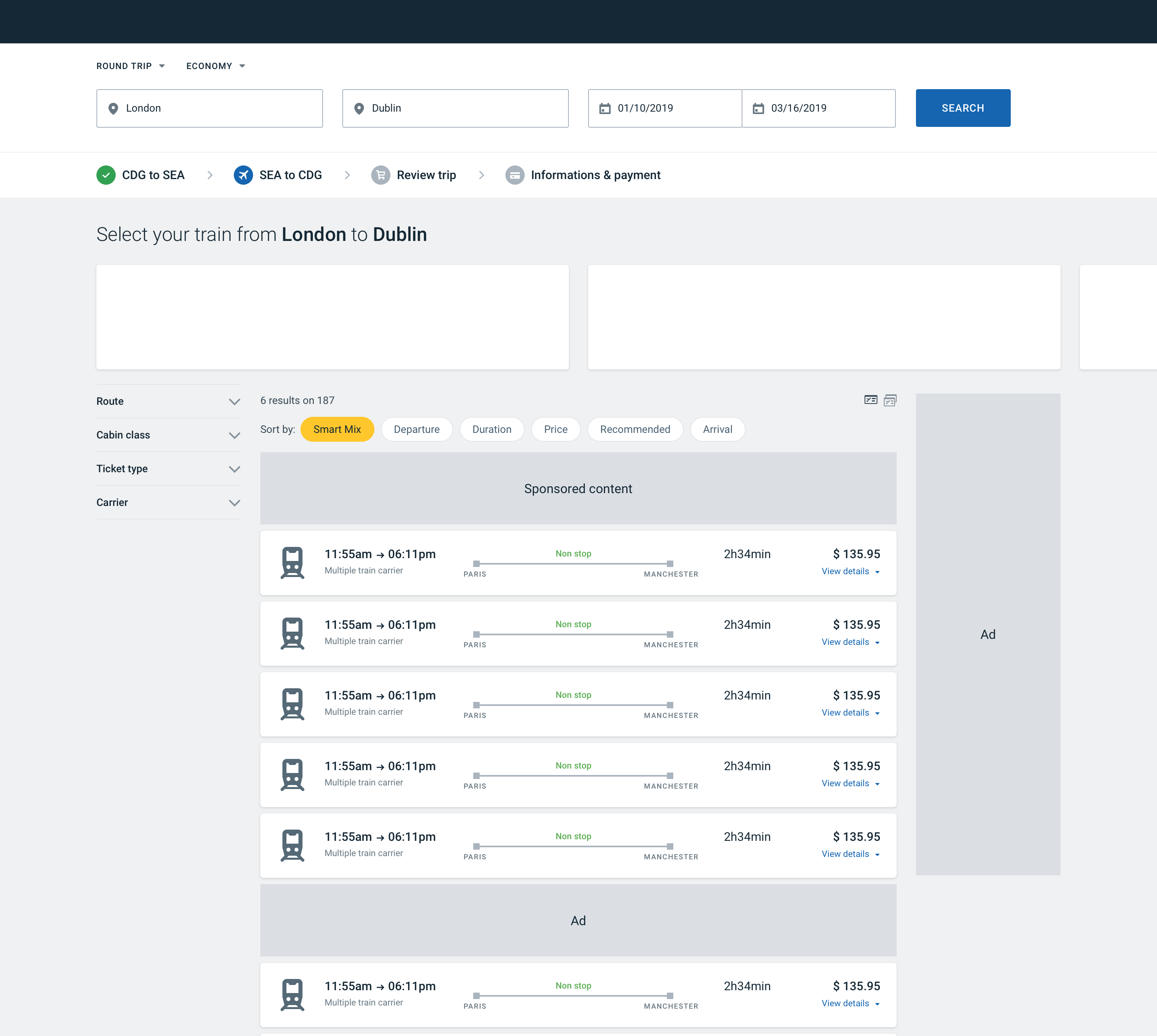Components shared within the product (such as filters, search bars, etc.) and their placement, was optimized while working closely with the transportation teams in Paris. With their help, we conducted A/B tests of these new patterns from which all parts of the product can benefit. The aim is to apply the resulting knowledge globally.
Consistency resides on display rules you apply to components. In the case of the result cards, we have defined 3 levels of information importance.
• Level 1 area contains the result area
• Level 2 area is dedicated to filtering components
• Level 3 area contains the search options and breadcrumb navigation. This area can also contain display options
• Level 4 areas are dedicated to the information that doesn’t impact the booking (ads or contextual help)
Two layouts are available. Layouts are chosen based on the components need (ex: hotel map)



